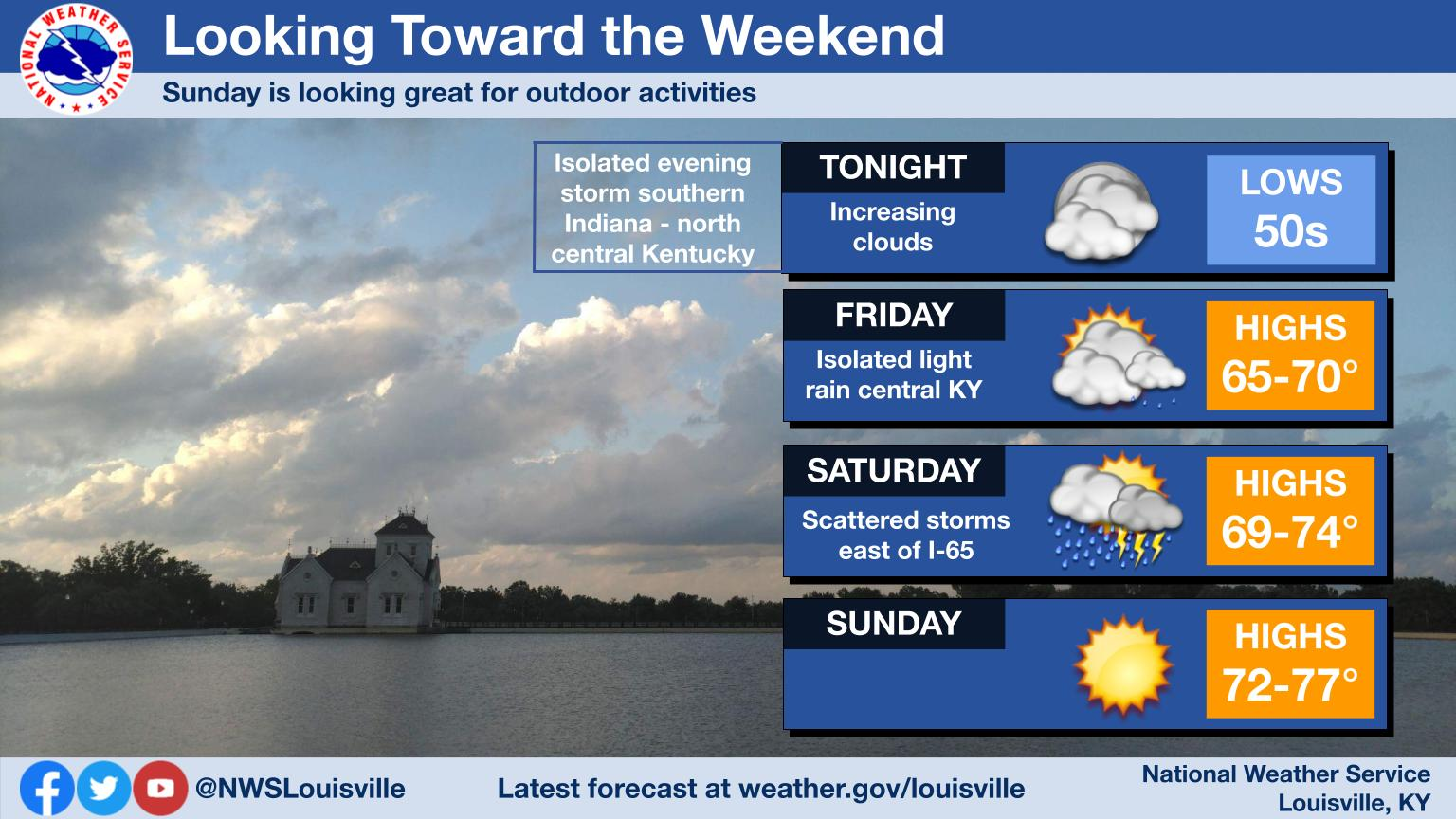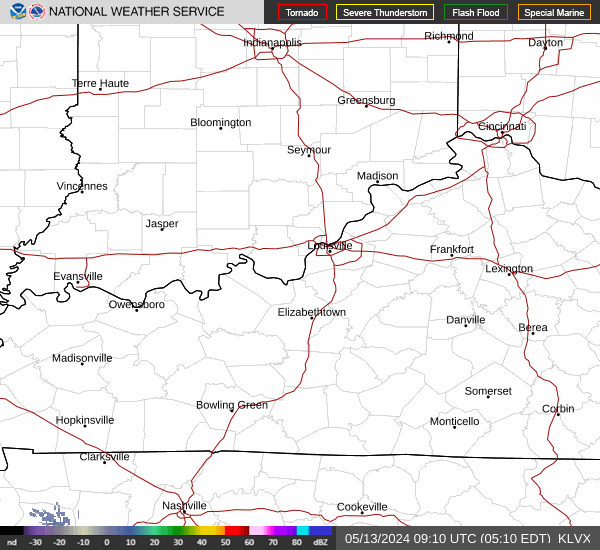Louisville, KY
Weather Forecast Office
Chaff Detected by NWS Louisville Radar
It has been documented in the past, particularly in western states, that NWS NEXRAD radar can detect chaff. What is that you ask? Chaff is a radar countermeasure used by military aircraft consisting of very small pieces of metal such as aluminum. It can appear as narrow bands of reflectivity on the radar since they are dispersed by planes flying at high speeds along a path.
During the afternoon hours of 7 January 2006, the Louisville NEXRAD radar (KLVX) detected what appeared to be chaff. The day was mostly clear, with only a few high level cirrus clouds. Winds at the surface were out of the southwest, but higher up near the level the chaff was detected, winds were out of the west-northwest. The echoes presented here are somewhat weaker than normal, topping out around 16 dBz or so.
Below is a selection of still images. Click here for an animation of the radar data (754 KB filesize)
KLVX 0.5 degree elevation scan at 3:41 PM EST on January 7th. The brightest chaff return between Louisville and Evansville (over Perry County Indiana) was at around 3,000 feet above ground level (AGL). You can see the banded streaks which are consistent with the nature of documented chaff returns. They were traveling toward the east-southeast.
KLVX 1.5 degree elevation scan at the same time. Chaff returns over Perry County are between 4,800 and 5,800 feet AGL.
KLVX 2.4 degree elevation scan, same time. The echos southwest of the radar are roughly 6,000 to 8,000 feet AGL.
Visible satellite picture around the same time with surface observations overlaid. The clouds there are cirrus, generally around 25,000 feet AGL.
For additional documentation, see these webpages:
Current Hazards
Hazardous Weather Outlook
Storm Prediction Center
Submit a Storm Report
Advisory/Warning Criteria
Radar
Fort Knox
Evansville
Fort Campbell
Nashville
Jackson
Wilmington
Latest Forecasts
El Nino and La Nina
Climate Prediction
Central U.S. Weather Stories
1-Stop Winter Forecast
Aviation
Spot Request
Air Quality
Fire Weather
Recreation Forecasts
1-Stop Drought
Event Ready
1-Stop Severe Forecast
Past Weather
Climate Graphs
1-Stop Climate
CoCoRaHS
Local Climate Pages
Tornado History
Past Derby/Oaks/Thunder Weather
Football Weather
Local Information
About the NWS
Forecast Discussion
Items of Interest
Spotter Training
Regional Weather Map
Decision Support Page
Text Products
Science and Technology
Outreach
LMK Warning Area
About Our Office
Station History
Hazardous Weather Outlook
Local Climate Page
Tornado Machine Plans
Weather Enterprise Resources
US Dept of Commerce
National Oceanic and Atmospheric Administration
National Weather Service
Louisville, KY
6201 Theiler Lane
Louisville, KY 40229-1476
502-969-8842
Comments? Questions? Please Contact Us.






 Weather Story
Weather Story Weather Map
Weather Map Local Radar
Local Radar